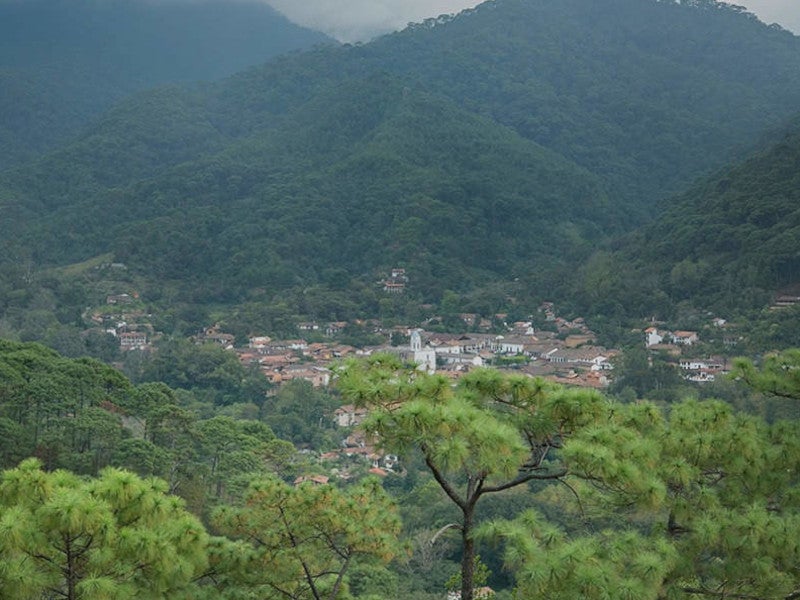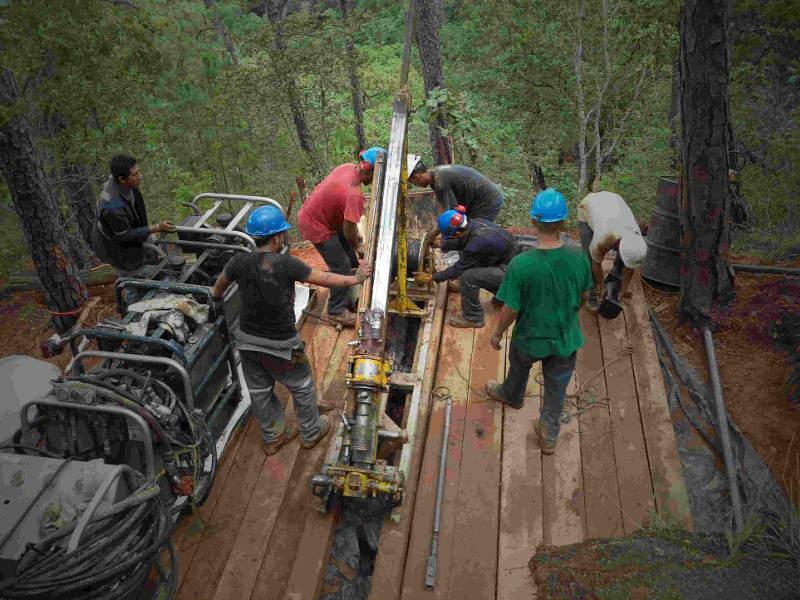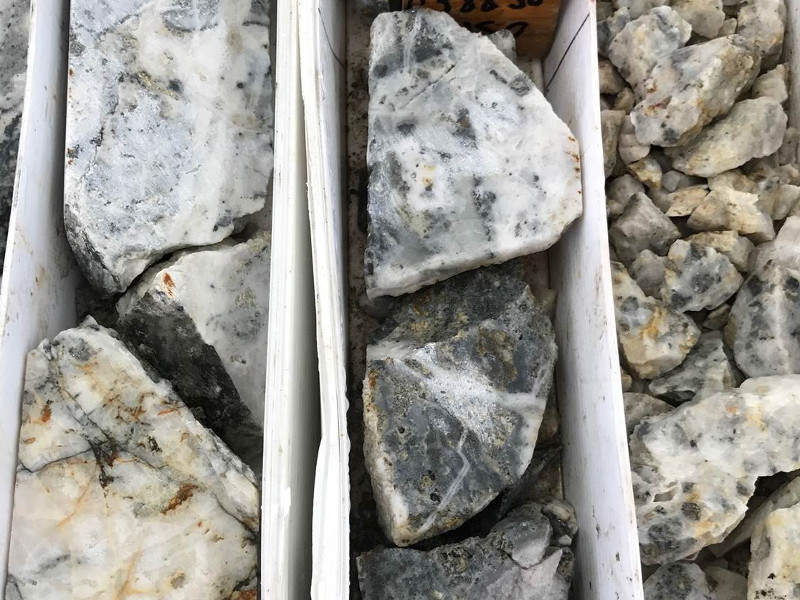The Terronera project is a high-grade underground silver-gold project being developed in the San Sebastian mining district in Jalisco state, Mexico.
Endeavour Silver is the developer that acquired the project in 2010.
The Mexican environmental permitting authority, SEMARNAT, approved the project’s environmental impact statement in the first quarter of 2017. The mine and plant permits were granted in the third quarter of 2017.
The project’s feasibility study was completed in September 2021. The initial capital cost of the project is estimated to be $271m. The project is scheduled to start production in the fourth quarter of 2024.
The underground project is expected to produce an average of four million ounces (Moz) of silver and 38,000oz of gold annually and is anticipated to have a mine life of ten years.
Terronera silver-gold project location
The Terronera project is situated on the northwest side of the state of Jalisco near the town of San Sebastian, 40km northeast of Puerto Vallarta. The property comprises 21 mineral concessions spread over 16,691 hectares.
Geology and mineralisation
Terronera is located within the Sierra Madre volcanic belt, which hosts most of Mexico’s gold and silver deposits.
The underground mine consists of two deposits, Terronera and La Luz. It comprises a low-sulphidation epithermal vein system, further divided into four mineralised vein sub-districts with an average thickness of between 2m and 8m.
Silver-gold mineralisation at Terronera is categorised as low-sulphidation, epithermal, bonanza-style, and is hosted in Cretaceous andesite volcanics. The vein minerals are classified as quartz-adulariacalcite-barite (sericite), and most of the ore minerals are found as argentite-pyrite (galena-sphalerite-pyrargyrite) in ginguro bands.
Terronera silver-gold mine reserves
The Terronera project is estimated to contain probable ore reserves of 7.3 million tonnes (Mt) grading 197g/t of Ag and 2.25g/t of Au containing 46Moz of silver and 534oz of gold, as of December 2023.
Mining at Terronera
The Terronera and La Luz deposits will be accessed by ramps and cut-and-fill mining method will be used to mine the ore. Trackless equipment will be used for primary ore production. The longhole mining method will be applied at both the deposits for recovery of sill pillars.
The drift-and-fill mining method will be used at the Terronera deposit for primary production, while the resue mining method will be applied at the La Luz deposit. The Terronera deposit is divided into five mining blocks, M1 to M5, while the La Luz deposit comprises a single mining block divided into upper and lower areas.
In 2023, more than 2,200m of underground development was completed. The focus of the development work was on Portals 1 and 2, and four declines to access ore, the main ventilation circuit and the haulage way. The Portal 4 incline was broken through to the surface.
Full-scale stoping began in January 2024 at both La Luz and Terronera deposits. The mining operations at La Luz are anticipated to conclude towards the end of 2025, with Terronera’s operations finishing by mid-2035.
Processing at Terronera
The ore processing operation will feature a robust crushing circuit designed to handle 50 tonnes of dump ore. Oversized material will be downsized using a hydraulic breaker. A grizzly feeder will then convey the ore to a primary jaw crusher for further crushing.
The crushed ore, along with the undersize from the feeder, will undergo further size reduction through secondary crushing. The crushed material will cycle back to the screening area, and conveyor belts will transport both intermediate and finely crushed material throughout the circuit.
The grinding circuit features a single-stage primary ball mill, which will process the hard vein material from the Terronera mine, indicated by a Bond Work Index (BWi). Material from the fine ore bin will be fed into the mill via a variable speed belt feeder.
The objective is to achieve a grind where 80% of the material is less than 70 microns (μm), utilising a cyclone battery in a closed circuit. Grinding media, along with flotation reagents, will be added to aid the process. Post-grinding, the slurry will be cleaned of debris before proceeding to the flotation stage.
In the flotation circuit, a flash flotation cell will be integrated to treat a portion of the cyclone underflow, with the tail product returning to the mill feed and the concentrate moving directly to the final concentrate thickener.
The concentrate will be thickened to 60% solids before filtering and storage for shipment, with each batch sampled and analysed for precious metal content and moisture.
Infrastructure facilities at Terronera silver-gold project
The Terronera silver-gold project site can be reached through a public access road connecting Puerto Vallarta.
An on-site Liquefied natural gas (LNG) generator will supply power to the project. The power plant will comprise six 1.9MW natural gas gen-sets arranged for N+1 operating mode, with an output voltage of 13.8kV.
On-site LNG storage will be constructed with a capacity of 227,100l, encompassing three 75,700l vertical tanks.
Fresh water will be pumped from the underground mining operations to a freshwater tank and fed by gravity to the processing plant, fire water system, potable water system and water trucks.
Development plans
Surface construction will continue in the second quarter of 2024, focusing on mechanical installations and the commencement of electrical work for the crushing area, coarse-ore stockpile, grinding, flotation, and tailings thickener sections.
The excavation of the Lower Platform is expected to reach completion in the forthcoming months. The initiation of concrete work for the LNG and power generation facilities, as well as the concentrate and tailing filtration, is also projected to be completed. Structural, mechanical, and electrical installations for concentrate and tailing filtration are scheduled to begin in the third quarter of 2024.
Mine development across Portals 1, 2, and 4 will progress, with the first ore development projected for the second quarter. The initial phase of long-hole mining is set for the third quarter, and will be succeeded by cut-and-fill mining.
Contractors involved
Endeavour Silver engaged Smith Foster & Associates for the preparation of the preliminary economic assessment and pre-feasibility study (PFS) for the Terronera project, while P&E Mining Consultants were engaged in preparing the mineral resource and reserve estimates.
Knight Piesold conducted mine geotechnical and water inflow tests as part of the PFS, while Wood (formerly AmecFW) is the designer of the tailings and water management facilities.
Resource Development was contracted to conduct metallurgical test works, while ALS Metallurgy was contracted to prepare flotation studies.






